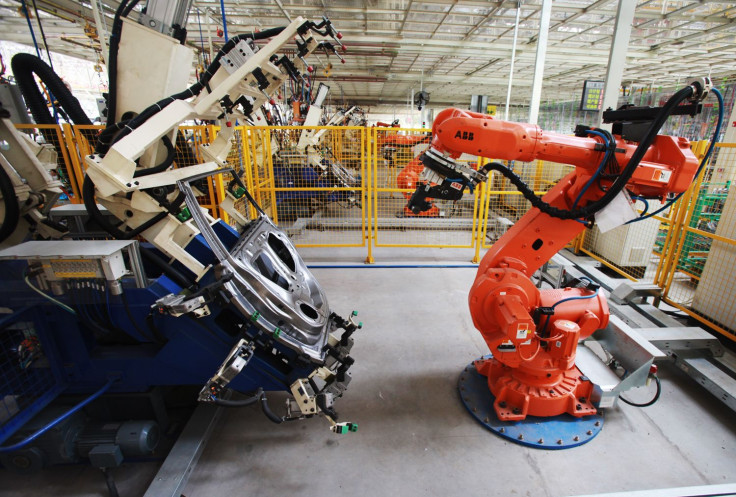China Now Has 30 Industrial Robot Factories, Could Double Robot Population By 2017

China has long been a source of low-cost manual labor, but as wages rise and the costs of automation drop, the Asian giant has begun to rapidly embrace industrial automation. The per-capita population of industrial robots is still low by global standards, but China has been playing catch-up and could double its robot population by 2017.
“Robotics and the Internet will transform global manufacturing, and China is entering a golden decade for the development of domestically produced robots,” Qu Daokui, deputy director of the State Engineering Research Center for Robotics, told China’s state news agency Xinhua in Shanghai on Sunday.
Qu said market forces are helping this growth as rising labor costs put pressure on China’s traditional market role as a provider of low-cost manual labor. Wages have been rising 10 percent annually over the past decade while the cost of robot production has dropped by about 5 percent a year over the same period, Qu said. China is betting that a shift toward automation will leads to more skilled workers.
One of the country’s long-term goals is to wean itself from being the world’s sweatshop with a large pool of low-skilled workers. But automation could also displace workers who rely on assembly jobs. U.S.-based athletic sportswear maker Nike Inc. said in its most recent sustainability report earlier this year it used 106,000 fewer contract factory workers in 2013 by employing more automated facilities.
The robotics center estimates there are about 420 domestic robotics companies in China with more than 30 robotics factories in the works. But China still imports three out of every four industrial robots, and even the domestically produced machines rely on some imported parts.
The Frankfurt-based International Federation of Robotics said China became the world’s largest industrial robotics market in 2013 with a 20 percent global market share. “Between 2008 and 2013, total supply of industrial robots increased by about 36 percent per year on average in China,” according to a recent IFR report.
© Copyright IBTimes 2024. All rights reserved.






















